Hawaii’s vibrant coral reefs are home to a diverse array of reef fish‚ showcasing stunning colors and unique adaptations. These species play a vital role in maintaining marine ecosystems and cultural traditions.
Overview of Hawaii’s Marine Environment
Hawaii’s marine environment is a unique and biodiverse ecosystem‚ characterized by its clear waters and vibrant coral reefs. Located over 2‚300 miles from the nearest continent‚ the Hawaiian Islands are home to some of the healthiest and most diverse marine life on Earth. The archipelago’s geographic isolation has allowed many species to evolve uniquely‚ making it a hotspot for endemic marine life. Coral reefs play a central role in this ecosystem‚ providing habitat and food for countless species of fish‚ invertebrates‚ and algae. The reefs also protect shorelines from wave action and support both marine and human communities. Despite their beauty and importance‚ Hawaii’s marine ecosystems face challenges such as climate change‚ overfishing‚ and coastal development‚ highlighting the need for conservation efforts to preserve this irreplaceable natural resource.
Importance of Reef Fish in Hawaiian Ecosystems
Reef fish are indispensable to the balance and health of Hawaii’s marine ecosystems. They play a crucial role in maintaining coral reef diversity by controlling algae growth‚ which prevents reefs from being overwhelmed by vegetation. Herbivorous fish species‚ such as parrotfish and surgeonfish‚ actively graze on algae‚ ensuring the coral has space to grow. Predatory fish regulate the populations of smaller fish and invertebrates‚ maintaining ecological equilibrium. Additionally‚ reef fish serve as a vital food source for larger marine predators‚ including sea turtles and monk seals. Their presence also supports commercial and recreational fisheries‚ contributing to Hawaii’s economy and cultural practices. Without reef fish‚ coral reefs would struggle to sustain their complex web of life‚ highlighting their essential role in preserving Hawaii’s underwater ecosystems and biodiversity.
Popular Reef Fish Species in Hawaii
Hawaii is renowned for its colorful and diverse reef fish‚ attracting marine enthusiasts worldwide. Among the most popular species are the vibrant parrotfish‚ known for their distinctive “beak” and role in coral health. Butterflyfish‚ with their striking patterns‚ are also a favorite among snorkelers and divers. Wrasse‚ particularly the Hawaiian cleaner wrasse‚ are celebrated for their dynamic behavior and crucial ecological roles. Angelfish‚ such as the regal angelfish‚ captivate with their graceful appearance and intricate markings. These species‚ along with others like surgeonfish and triggerfish‚ contribute to the rich tapestry of Hawaii’s coral reefs. Their diversity and beauty make them central to both marine ecosystems and the cultural identity of the islands‚ drawing visitors eager to experience their splendor firsthand.
Common Species of Hawaii Reef Fish
Hawaii’s reefs teem with vibrant species like parrotfish‚ butterflyfish‚ and wrasse‚ each showcasing unique colors and behaviors. These fish are integral to coral reef health and local culture.
Butterflyfish: Characteristics and Habitat
Butterflyfish are among Hawaii’s most colorful and iconic reef fish‚ known for their vibrant patterns and elongated bodies. They typically range in size from 4 to 8 inches and often display striking stripes or spots. Many species are specialized feeders‚ using their pointed snouts to eat algae‚ small invertebrates‚ or coral polyps. Some‚ like the longnose butterflyfish‚ have elongated snouts that allow them to reach into coral crevices. These fish are generally diurnal and are commonly seen in pairs or small groups. Butterflyfish thrive in shallow‚ sunlit waters near coral reefs‚ where food is abundant. Their bright colors serve as both camouflage and communication tools. Despite their beauty‚ some species are sensitive to environmental changes‚ making them important indicators of reef health. Their unique adaptations and behaviors make them a favorite among marine biologists and snorkelers alike in Hawaii’s tropical waters.
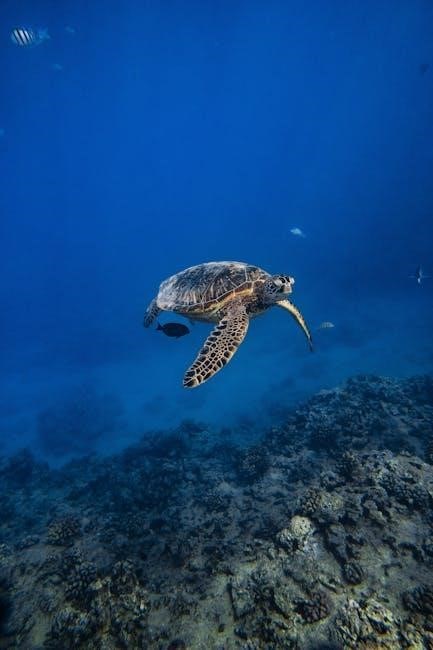
Wrasse: Diversity and Behavior
Wrasse are one of the most diverse families of fish in Hawaii’s coral reefs‚ with over 60 species documented. These small‚ colorful fish are known for their dynamic behavior and striking appearances. Many wrasse species exhibit sexual dimorphism‚ with males displaying brighter colors and elongated fins to attract mates. They are primarily herbivores or omnivores‚ feeding on algae‚ zooplankton‚ and small invertebrates. Some wrasse‚ like the Hawaiian cleaner wrasse‚ have specialized roles‚ such as cleaning parasites from larger fish. Wrasse are often territorial and can be seen darting between coral crevices for shelter. Their vibrant colors and energetic movements make them a favorite among snorkelers and divers. Despite their small size‚ wrasse play a significant role in maintaining the balance of reef ecosystems by controlling algae growth and serving as prey for larger predators.
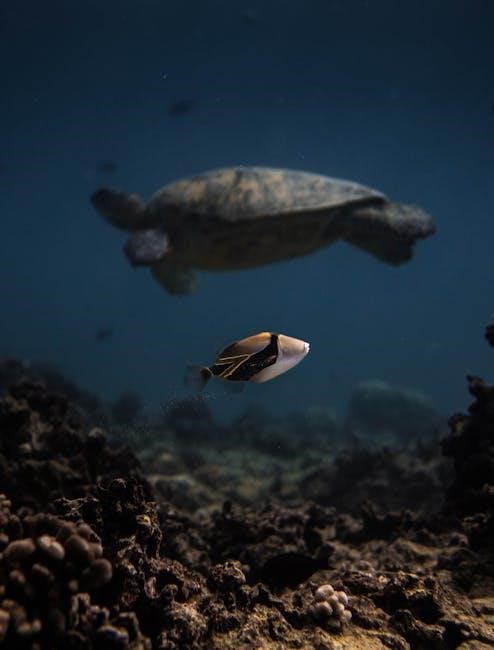
Parrotfish: Role in Coral Reef Health
Parrotfish are instrumental in maintaining the health of Hawaii’s coral reefs. These colorful fish feed on algae‚ preventing it from overgrowing and smothering coral colonies. Using their distinctive parrot-like beaks‚ they scrape algae from coral surfaces‚ promoting a balanced ecosystem. Parrotfish also play a unique role in coral reef formation; they ingest coral polyps along with algae‚ and their digestive system grinds down the calcium carbonate‚ which is then excreted as sand. This process contributes to the creation of sandy beaches and helps maintain the structural integrity of reefs. By controlling algae growth and facilitating nutrient recycling‚ parrotfish are vital to the sustainability of coral reef ecosystems. Their absence could lead to ecosystem imbalance‚ highlighting their critical importance in preserving Hawaii’s marine biodiversity and coastal protection.
Angelfish: Distinctive Features and Species
Angelfish are among the most striking reef fish in Hawaii‚ known for their vibrant colors and flowing fins. These species often display striking patterns and hues‚ making them popular among marine enthusiasts. Common Hawaiian species include the Blue-Finned Angelfish and the Pygmy Angelfish‚ each with unique markings. Angelfish are generally territorial and herbivorous‚ feeding on algae and small invertebrates. Their diet helps maintain the balance of coral reefs by preventing algae overgrowth. Some species can grow quite large‚ while others remain smaller and more elusive. Their distinctive flowing fins and striking coloration make them a favorite for photographers and divers. Angelfish are also known for their complex social behaviors‚ often forming pairs or small groups. Their beauty and ecological role make them a key part of Hawaii’s marine biodiversity and a highlight for those exploring coral reefs.
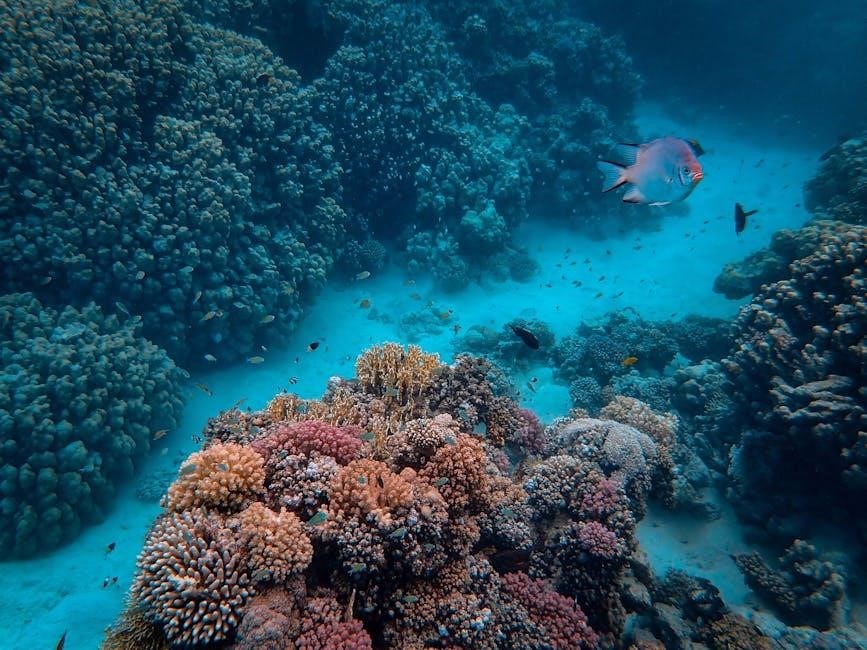
Conservation Efforts for Reef Fish
Hawaii’s conservation efforts focus on protecting reef fish through marine protected areas‚ sustainable fishing practices‚ and community-led initiatives to preserve biodiversity and ecological balance.
Threats to Hawaii’s Coral Reefs
Hawaii’s coral reefs face significant threats‚ including climate change‚ which causes rising sea temperatures and ocean acidification‚ leading to coral bleaching and reduced growth rates. Pollution from land-based sources‚ such as agricultural runoff and sewage‚ damages water quality‚ while overfishing disrupts the delicate balance of marine ecosystems. Invasive species‚ like the crown-of-thorns starfish‚ can devastate coral colonies. Coastal development and dredging also contribute to habitat loss and sedimentation‚ which smothers coral. Additionally‚ recreational activities‚ such as careless snorkeling or anchoring‚ can physically damage reefs. These threats highlight the urgent need for conservation efforts to protect Hawaii’s vital coral reefs and the diverse life they support.
Local Regulations for Marine Conservation
Hawaii has implemented various regulations to protect its marine ecosystems‚ including marine protected areas (MPAs) and restrictions on fishing practices. The State of Hawaii Division of Aquatic Resources (DAR) enforces rules to prevent overfishing and protect critical habitats. Bag limits and size restrictions are in place for many reef fish species to ensure sustainable populations. Certain areas‚ like coral reefs‚ are closed to fishing gear that can cause damage‚ such as gillnets. Additionally‚ regulations address land-based pollution‚ limiting the use of harmful pesticides and fertilizers that can harm marine life. Public education campaigns encourage responsible fishing and diving practices‚ while community-based programs promote the restoration of nearshore fisheries. These efforts aim to balance human needs with the preservation of Hawaii’s unique marine biodiversity for future generations.
Community Involvement in Reef Protection
Community involvement is crucial for protecting Hawaii’s coral reefs and reef fish. Local organizations and volunteers actively participate in reef cleanups‚ reducing pollution and debris that harm marine life. Educational programs in schools and communities emphasize the importance of conservation‚ encouraging sustainable fishing practices and environmental stewardship. Traditional Hawaiian cultural practices also play a role‚ fostering a deep connection between people and the ocean. Many residents engage in citizen science projects‚ such as monitoring fish populations and reporting illegal fishing activities. Collaborative efforts between communities and government agencies ensure that local voices are heard in marine management decisions. By uniting residents‚ visitors‚ and experts‚ Hawaii strives to preserve its vibrant reefs and the diverse fish species that call them home for future generations to enjoy and protect.
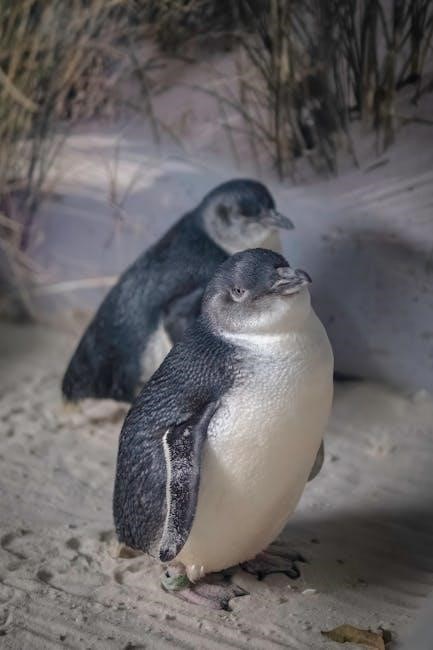
Snorkeling and Diving with Reef Fish
Snorkeling and diving in Hawaii offer unforgettable encounters with vibrant reef fish. Explore crystal-clear waters‚ discover rainbow-colored species‚ and experience the unique marine biodiversity of the Hawaiian Islands.
Best Spots for Observing Reef Fish
Hawaii offers some of the most spectacular spots for observing reef fish‚ with crystal-clear waters and vibrant coral reefs. Hanauma Bay‚ a protected marine sanctuary on Oahu‚ is renowned for its stunning biodiversity and accessibility. The Big Island’s Kealakekua Bay is another hotspot‚ featuring an array of tropical fish species. Maui’s Molokini Crater‚ a crescent-shaped volcanic crater‚ provides a unique snorkeling experience with its clear waters and diverse marine life. Kauai’s Poipu Beach and Lanai’s Hulopoe Bay are also favorites among snorkelers and divers. These locations are not only teeming with colorful fish but also offer opportunities to see sea turtles and other marine creatures. Visiting these spots during calm conditions enhances the chances of spotting a wide variety of reef fish. Always practice responsible tourism by respecting protected areas and marine life habitats.
Responsible Diving Practices
Responsible diving practices are essential to preserve Hawaii’s fragile marine ecosystems. Always maintain a safe distance from reef fish and avoid touching coral reefs‚ as this can cause irreversible damage. Never feed fish‚ as it disrupts their natural behaviors and can harm the ecosystem. Use reef-safe sunscreen to prevent chemical contamination of the water. Dive with certified guides who understand local regulations and can provide insights into marine life. Proper buoyancy control is crucial to avoid accidentally damaging reefs. Respect marine protected areas and follow all local guidelines. Avoid wearing gloves or fins that could harm the environment. By adopting these practices‚ divers can help protect Hawaii’s vibrant reef fish populations and ensure the reefs remain healthy for future generations. Responsible tourism plays a vital role in conservation efforts and supports the sustainability of these incredible ecosystems.
Guided Tours for Fish Identification
Guided tours are an excellent way to explore and identify Hawaii’s diverse reef fish species. Expert guides provide insights into the unique characteristics‚ habitats‚ and behaviors of various fish‚ enhancing the overall experience. These tours often focus on sustainable practices‚ promoting environmental awareness and responsible diving. Many guides are knowledgeable about local marine life and can help distinguish between similar species‚ offering a deeper understanding of the ecosystem. Popular spots like Hanauma Bay and Molokini Crater are frequently visited‚ with guides ensuring safe and educational interactions. By participating in guided tours‚ visitors support conservation efforts and local businesses. These tours also encourage responsible tourism‚ helping to protect Hawaii’s marine biodiversity while fostering a connection between people and the ocean. They are a great way to learn about reef fish while contributing to the preservation of these incredible ecosystems.
Cultural Significance of Reef Fish
Hawaii’s reef fish have deep cultural significance‚ featuring in traditional Hawaiian rituals‚ ceremonies‚ and daily life. They remain integral to modern cultural practices‚ symbolizing sustainability and connection to the ocean.
Traditional Hawaiian Uses of Fish
In traditional Hawaiian culture‚ reef fish were a primary food source and held significant cultural value. They were not only a staple in daily meals but also played a role in ceremonies and rituals. Ancient Hawaiians practiced sustainable fishing methods‚ ensuring the balance of marine ecosystems. Fish were also used in trade and as offerings to deities. Their importance extended beyond nutrition‚ symbolizing spiritual connection to the ocean and community life. Traditional Hawaiian fishponds‚ or loko iʻa‚ were engineered to raise fish sustainably‚ showcasing ingenuity in resource management. These practices reflected a deep respect for the sea and its bounty‚ emphasizing harmony between people and nature. The cultural legacy of Hawaii’s reef fish continues to inspire modern conservation efforts and community traditions.
Modern Cultural Practices and Fish
Modern Hawaiian culture continues to celebrate reef fish through various practices and traditions. Community events‚ such as fish festivals and marine conservation fairs‚ highlight the importance of sustainable fishing and reef preservation. Many locals and visitors alike participate in educational programs that promote the cultural and ecological significance of these species. Additionally‚ modern Hawaiian cuisine often features reef fish‚ blending traditional recipes with contemporary flavors. Art and storytelling also play a role‚ with local artists creating pieces inspired by marine life. These practices not only honor the historical connection to the ocean but also foster a sense of responsibility for its stewardship. By integrating traditional values with modern innovations‚ Hawaii ensures that reef fish remain a vital part of its cultural identity and environmental efforts.
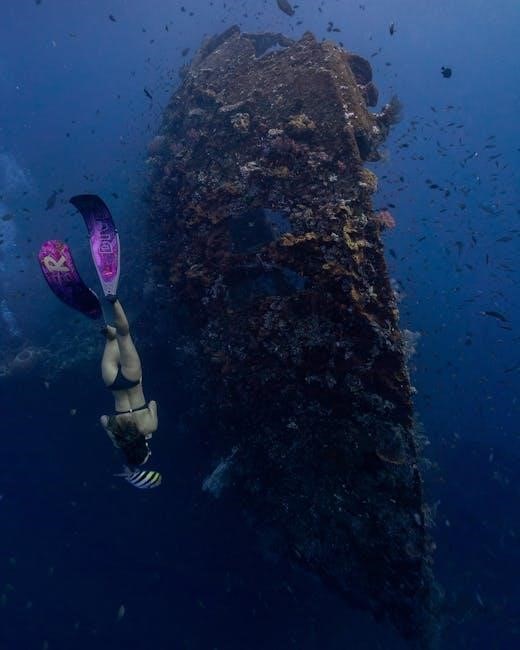
Resources for Further Learning
Explore detailed guides‚ scientific studies‚ and local expertise to deepen your understanding of Hawaii’s reef fish‚ including recommended books and online databases for comprehensive knowledge.
Recommended Books on Hawaiian Reef Fish
For an in-depth understanding of Hawaiian reef fish‚ several books stand out. “Coral Reef Fishes: Indo-Pacific and Caribbean” by Gerald R. Allen offers comprehensive insights into reef ecosystems. “Marine Fishes of Hawaii” by John E. Randall provides detailed species descriptions. “Hawaiian Reef Fish: A Guide for Snorkelers and Divers” by Isabella A. Abbott is perfect for enthusiasts exploring Hawaii’s waters. Lastly‚ “The Fishes of Hawaii” by various authors covers the biological and cultural significance of these species. These books are invaluable resources for researchers‚ divers‚ and anyone passionate about Hawaii’s marine life.
Online Resources and Databases
Exploring Hawaiian reef fish is made easier with online resources and databases. NOAA’s Coral Reef Conservation Program provides detailed information on Hawaii’s coral reefs and fish species. The Hawaii Department of Land and Natural Resources offers guides to marine life‚ including reef fish. FishBase and MarineBio are excellent databases for species identification‚ habitat details‚ and conservation statuses. Additionally‚ ReefBase offers a global perspective on coral reefs‚ with specific data on Hawaiian ecosystems. These platforms are essential for researchers‚ divers‚ and enthusiasts seeking accurate and up-to-date information on Hawaii’s vibrant marine biodiversity.
Local Experts and Research Institutions
Hawaii is home to renowned experts and institutions dedicated to studying and protecting reef fish. The University of Hawaii conducts extensive marine research‚ particularly through its Hawaii Institute of Marine Biology‚ which focuses on coral reef ecosystems and fish behavior. Local organizations like the Hawaii Department of Land and Natural Resources employ marine biologists who monitor fish populations and habitats. NOAA’s Coral Reef Conservation Program also plays a crucial role‚ collaborating with local experts to develop conservation strategies. Additionally‚ marine experts like Dr. Ku’ulei Rodgers are prominent figures in reef fish research‚ contributing to both scientific knowledge and community education. These experts and institutions provide valuable insights and resources for anyone interested in Hawaii’s reef fish‚ ensuring accurate and up-to-date information is accessible to the public.